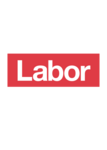| |||||||||||||||||||||||||||||||||||||||||||||||||
All 17 seats of the unicameral Legislative Assembly 9 seats needed for a majority | |||||||||||||||||||||||||||||||||||||||||||||||||
|---|---|---|---|---|---|---|---|---|---|---|---|---|---|---|---|---|---|---|---|---|---|---|---|---|---|---|---|---|---|---|---|---|---|---|---|---|---|---|---|---|---|---|---|---|---|---|---|---|---|
| Turnout | 91.8 ( | ||||||||||||||||||||||||||||||||||||||||||||||||
| |||||||||||||||||||||||||||||||||||||||||||||||||
 Results by electorate | |||||||||||||||||||||||||||||||||||||||||||||||||
| |||||||||||||||||||||||||||||||||||||||||||||||||
Elections to the Australian Capital Territory Legislative Assembly were held on Saturday, 21 February 1998. The incumbent Liberal Party, led by Kate Carnell, was challenged by the Labor Party, led by Wayne Berry. Candidates were elected to fill three multi-member electorates using a single transferable vote method, known as the Hare-Clark system. The result was another hung parliament. However the Liberals, with the largest representation in the 17-member unicameral Assembly, formed Government with the support of independents Michael Moore, Paul Osborne, and Dave Rugendyke. Carnell was elected Chief Minister at the first sitting of the fourth Assembly on 19 March 1998.[1]
Subsequent to the election and during the life of the fourth Assembly, on 18 October 2000, Carnell stepped down as Chief Minister and was replaced by Gary Humphries.
This would be the last time the Liberal Party (or the Coalition) would form government at a state or territory level after an election until the 2008 Western Australian state election. Also, this is the last time the Liberal Party has formed government after an election in the ACT.
- ^ "Legislative Assembly for the ACT - Week 1". ACT Hansard. ACT Legislative Assembly. 19 March 1998. Retrieved 8 August 2010.

